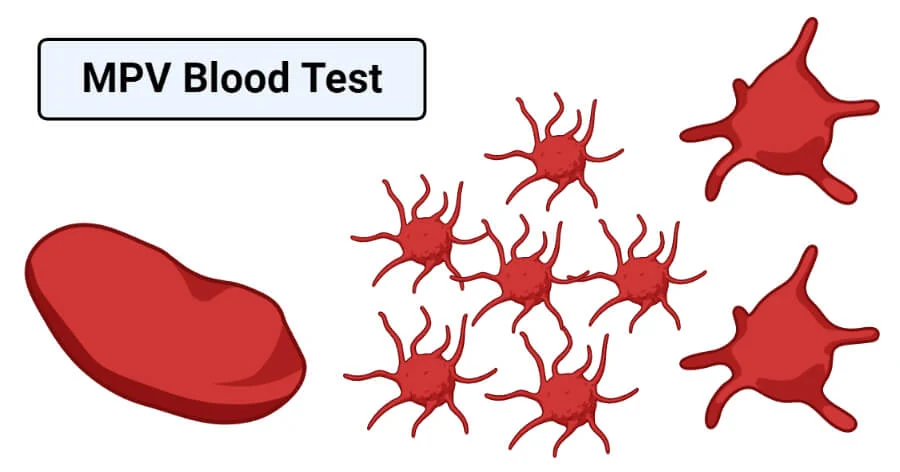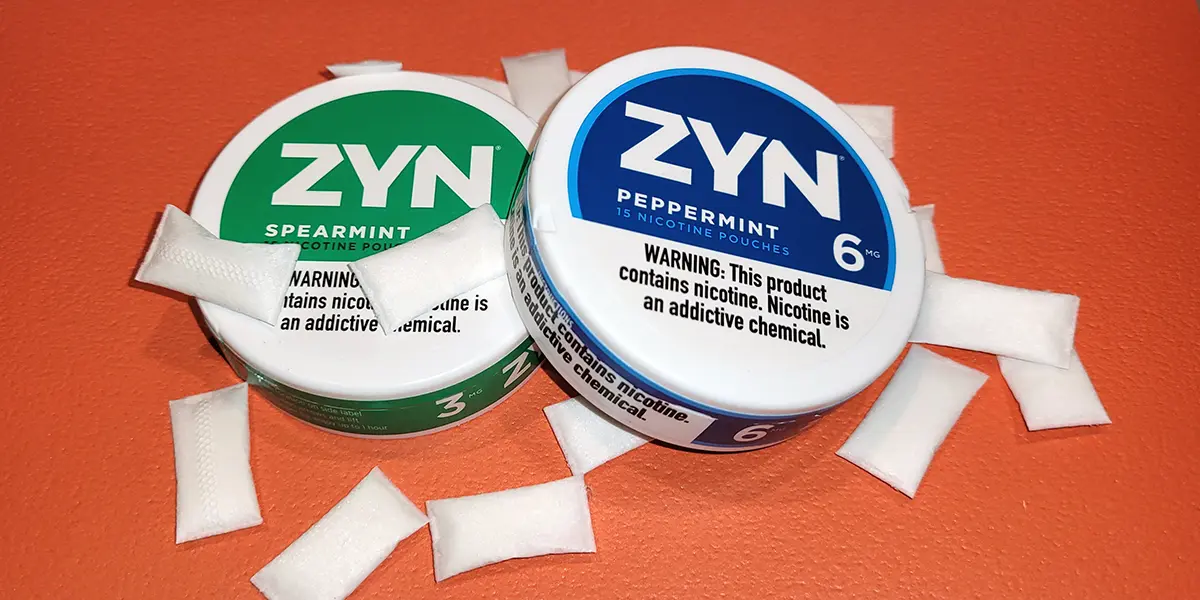So—what is MPV in a blood test, anyway? The short answer is that MPV stands for Mean Platelet Volume, which is a measure of the average size of your platelets. But that sounds a bit abstract at first, right? When you get a Complete Blood Count (CBC) at your doctor’s office, MPV quietly sits in the results list, usually tucked near your platelet count and other blood cell markers.
It’s one of those numbers you might overlook until the lab highlights it in yellow. The reason doctors pay attention to MPV is that platelets aren’t just numbers on a page. They’re tiny, disc-shaped fragments of your blood cells that rush in whenever you get a cut or bruise. They clump, form a clot, and stop bleeding.
Without them, even a paper cut could be trouble. MPV basically tells you something about how active or “young” your platelets are, which can sometimes whisper clues about your bone marrow activity or even about risks for things like heart disease or inflammatory conditions.
And honestly, while it might sound technical, knowing your MPV level is a simple way of peeking. How is your body balancing clotting, Deep healing, and blood flow? Some people ignore it; others spiral into worry after a high or low result. The truth is somewhere in between.
1. What Is MPV in a Blood Test?

If you’ve ever stared at your lab report and thought, “Okay, but what is MPV in a blood test supposed to mean?”—you’re not alone. At its core, Mean Platelet Volume (MPV) is a calculation of the average size of your platelets, measured in femtoliters (fL). Bigger platelets tend to be newer and more active; smaller ones, older or produced in lower numbers.
Here’s the important bit: MPV is not the same as platelet count. Think of it this way—platelet count tells you how many platelets are circulating in your blood sample, while MPV describes their size. A person can have a normal platelet count but unusually large platelets (high MPV) or small ones (low MPV).
That’s why labs measure both values side by side, because one without the other doesn’t paint the full picture. Why does this matter? Because platelets are the frontline soldiers for blood clotting. They’re the reason a scraped knee doesn’t bleed forever. They also play sneaky roles in wound healing, vascular integrity, and even some inflammatory disorders.
Doctors look at MPV to get a quick sense of whether your bone marrow is producing platelets at a normal pace or if something’s interfering with the process—like autoimmune diseases, bone marrow disorders, or even recovery after blood loss.
Pro Tip:
👉 If you see “platelet indices” on your lab report, MPV is part of that family. Other measures, like platelet distribution width (PDW), add more context about platelet size variation. Together, they give doctors hints about potential clotting factors or bleeding disorders.
2. Why Is MPV Important?

You might wonder—why do doctors even care about this odd little number on your blood test results? The truth is, MPV isn’t a diagnosis by itself, but it’s a signal. Think of it as a nudge pointing doctors toward what might be happening in your blood.
- Platelet Production and Bone Marrow Activity: Larger platelets usually mean your bone marrow is pumping out new ones quickly—maybe because old ones were destroyed or lost. Smaller platelets can suggest slower production, sometimes linked to bone marrow disorders or autoimmune diseases.
- Clotting and Cardiovascular Risk: MPV can hint at whether your platelets are hyperactive, which matters for blood clotting. High MPV has been studied as a possible risk factor for coronary artery disease, stroke, and other cardiovascular conditions.
- Inflammation and Chronic Illness: Researchers have found associations between abnormal MPV levels and diseases like rheumatoid arthritis, Crohn’s disease, ulcerative colitis, and even metabolic syndrome.
In other words, MPV gives a subtle clue about the quality of your platelets, not just the quantity. It’s not perfect—it can be influenced by temporary things like stress or infection—but it often shows up early when something’s off.
3. MPV Normal Range in Blood Tests
Okay, here’s the part most people scroll straight to: what’s normal? Typically, the what is MPV in a boold test normal range falls between 7.5 and 12 femtoliters (fL). But—and this is important—different labs (like Metropolis Healthcare or OnPoint Lab) may use slightly different machines or calibration standards, so your report might show a range like 7.4–10.4 fL instead.
Here’s a quick look:
| MPV Result (fL) | Interpretation |
| Below 7.5 fL | Low MPV – may mean reduced platelet production or smaller platelets |
| 7.5 – 12 fL | Normal MPV range – considered typical in most labs |
| Above 12 fL | High MPV – may suggest larger, younger platelets from increased turnover |
But here’s the tricky part: being a bit above or below the reference range doesn’t automatically mean there’s a serious problem. A slight dip could be linked to a recent infection, certain medications, or even lab technician variations during blood collection.
So when labs highlight your MPV as abnormal, it’s less about panic and more about context. Your doctor will usually check platelet count, red blood cells, white blood cell levels, hemoglobin levels, and hematocrit levels to see the bigger picture.
Question people often ask: What counts as high or low MPV?
- High MPV: Generally above 12 fL, linked to active bone marrow response, recovery after blood loss, or sometimes myeloproliferative diseases.
- Low MPV: Below 7.5 fL, which might suggest bone marrow suppression, autoimmune conditions, or certain chronic kidney diseases.
Pro Tip:
👉 Always look at MPV alongside other values in your Complete Blood Count (CBC). On its own, it’s like reading just one chapter of a book—you’ll miss the whole story.
4. High MPV: What It Means
So let’s flip to one side of the scale. What happens if your report says your Mean Platelet Volume (MPV) is higher than normal? In most labs, that means above 12 femtoliters (fL). And honestly, it can sound scary when you see that number in bold.
But here’s what high MPV really suggests: your platelets are larger, younger, and more active than average. That usually means your bone marrow is pushing out new platelets quickly, often in response to something else going on.
Some of the most common causes of high MPV include:
- Increased platelet turnover – after significant blood loss or destruction of older platelets.
- Recovery from bleeding or surgery – your body compensates by making fresh platelets.
- Bone marrow disorders – like myeloproliferative diseases or myelodysplastic syndromes, where platelet production goes into overdrive.
- Inflammatory conditions – such as rheumatoid arthritis, Crohn’s disease, or ulcerative colitis.
- Cardiovascular conditions – higher MPV has been linked to increased risk of heart disease, coronary artery disease, stroke, and metabolic syndrome.
Here’s a snapshot comparison:
| High MPV Scenario | Possible Meaning |
| High MPV + Low Platelet Count | Active bone marrow response (e.g., recovery from blood loss, immune thrombocytopenia) |
| High MPV + High Platelet Count | Possible bone marrow abnormalities or inflammatory disorders |
Is high MPV dangerous?
Not always. Sometimes it’s just your body bouncing back after blood loss or fighting off an infection. But persistent high MPV can point toward cardiovascular risk factors, or rarely, neoplastic diseases like certain blood or bowel cancers.
Pro Tip:
👉 If your MPV is high, don’t panic. Ask your doctor whether they’re more concerned about your platelet count, hemoglobin levels, and other CBC values. MPV alone rarely gives a full diagnosis.
5. Low MPV: What It Means
Now let’s check the other side. A low MPV, usually below 7.5 fL, means your platelets are smaller and older on average. That often suggests the bone marrow isn’t producing new platelets as actively as it should—or something is interfering with their formation.
Causes of low MPV can include:
- Reduced platelet production due to bone marrow suppression.
- Bone marrow disorders like aplastic anemia, myelodysplastic syndromes, or even effects after chemotherapy.
- Autoimmune diseases – for example, systemic lupus erythematosus (SLE) or immune thrombocytopenia (ITP).
- Chronic illnesses – such as chronic kidney disease, pulmonary disease, or metabolic syndrome.
- Certain infections or treatments that slow bone marrow activity.
Examples of conditions linked to low MPV:
- Lupus (SLE) – where the immune system mistakenly attacks blood cells.
- Aplastic anemia – bone marrow stops producing enough new blood cells.
- Chronic kidney disease often affects both red and white blood cells, along with platelets.
So—should you be worried if your MPV is low? Maybe, maybe not. A single low result doesn’t always mean something severe. For example, temporary viral infections or certain medications can cause dips in MPV. But if it’s consistently low, doctors may order follow-up tests like a bone marrow biopsy or broader lab tests to rule out bigger issues.
Pro Tip:
👉 Low MPV doesn’t usually cause symptoms directly. What you’d notice are the effects of the underlying issue: fatigue, unusual bruising, or prolonged bleeding. If you’ve had these alongside low MPV, it’s definitely worth a doctor’s appointment or even a video consultation with a hematologist.
6. MPV and Platelet Count: Understanding the Connection

It’s one thing to look at your MPV. It’s another to see it next to your platelet count—and that’s when things start to make sense. Doctors rarely interpret MPV in isolation, because the story is in the combination.
Here’s a breakdown of the common scenarios:
| Platelet Count + MPV | Possible Meaning |
| High MPV + Low Platelet Count | Suggests active bone marrow production in response to platelet destruction, often seen in immune thrombocytopenia, recovery after blood loss, or certain bone marrow abnormalities. |
| Low MPV + High Platelet Count | Often linked to reactive thrombocytosis (body producing lots of small platelets due to inflammation, infection, or iron deficiency). |
| High MPV + High Platelet Count | May indicate myeloproliferative diseases or ongoing inflammatory disorders like rheumatoid arthritis. |
| Low MPV + Low Platelet Count | More concerning—can point toward bone marrow suppression, aplastic anemia, chemotherapy side effects, or chronic kidney disease. |
So if you’re wondering, why do doctors check MPV and platelet count together?—it’s because the two values act like puzzle pieces. MPV gives insight into platelet size and activity, while platelet count reveals the number of circulating platelets. Together, they help detect whether the issue is production, destruction, or function of platelets.
Pro Tip:
👉 If your report shows abnormal MPV but a normal platelet count, it’s often less alarming. Doctors usually dig deeper only if both numbers suggest something unusual about your blood cell types.
7. Symptoms That May Lead to an MPV Test
Here’s a funny thing: you usually don’t get tested for MPV directly. Instead, it’s automatically included in a Complete Blood Count (CBC)—one of the most routine tests out there. So you won’t walk into a clinic asking for an “MPV blood test.” You’ll just get it as part of a bigger panel.
But doctors often recommend a CBC with MPV if you have symptoms that hint at abnormal platelet function or bleeding disorders. These can include:
- Easy or unexplained bruising.
- Frequent nosebleeds.
- Prolonged bleeding after a small cut.
- Unexplained fatigue or weakness (sometimes tied to anemia or low hemoglobin levels).
- Heavy menstrual bleeding in women.
Another common trigger? Doctors may order a CBC if you’re being checked for conditions like cardiovascular disease, autoimmune diseases, metabolic syndrome, or chronic infections—all of which can influence platelet activity.
Pro Tip:
👉 If you’ve been dealing with unexplained bruises or odd bleeding patterns, don’t ignore it. Even though MPV is just a tiny number on your lab test, it can help uncover deeper issues in your cardiovascular health or immune system.
8. Conditions Associated with Abnormal MPV Levels
When you see “high” or “low” next to your MPV, it’s not the end of the story. It’s more of a nudge to check whether something bigger is happening inside your body. Abnormal Mean Platelet Volume (MPV) can be linked to a wide range of health issues—sometimes temporary, sometimes chronic.
Here are some of the conditions doctors look at:
- Cardiovascular Diseases: Studies suggest a higher MPV may correlate with increased risk of heart attack, stroke, coronary artery disease, and other cardiovascular risk factors. It doesn’t prove you’ll have a heart event, but it can flag extra attention to your cardiovascular health.
- Inflammatory Disorders: Chronic conditions like rheumatoid arthritis, Crohn’s disease, ulcerative colitis, and systemic lupus erythematosus (SLE) can all influence platelet size and function.
- Hematologic Conditions: Abnormal MPV may show up in thrombocytopenia, myelodysplastic syndromes, leukemia, chronic myelogenous leukemia, or immune thrombocytopenia (ITP). These are often diagnosed with further tests like a bone marrow biopsy.
- Metabolic and Chronic Conditions: Things like diabetes, obesity, metabolic syndrome, and chronic kidney disease have been tied to altered platelet indices, including MPV.
So, can MPV indicate risk factors for chronic disease? Maybe. It doesn’t diagnose them directly, but it often shows up as part of the bigger puzzle. Suppose your CBC blood test highlights abnormal MPV.
In that case, your doctor may check white blood cell levels, red blood cell counts, hemoglobin levels, hematocrit levels, or even order a Complete Metabolic Panel for a broader view.
Pro Tip:
👉 Don’t self-diagnose based on MPV alone. Instead, think of it as one clue—like a breadcrumb—that leads your doctor to decide whether to explore further with imaging, specialized lab tests, or referrals to a hematologist or cardiovascular specialist.
9. Factors That Can Affect MPV Results
Now here’s where it gets tricky: your MPV blood test results don’t exist in a vacuum. Sometimes, the number is less about disease and more about timing, lifestyle, or even the lab itself.
A few factors that can temporarily or consistently influence MPV include:
- Recent Infections or Illness – A flu or bacterial infection can briefly alter platelet size.
- Exercise and Stress – Both physical stress (like heavy workouts) and emotional stress can cause shifts in platelet activity.
- Lifestyle Factors – Smoking, alcohol use, and certain medications (like chemotherapy drugs or blood thinners) can skew MPV readings.
- Lab-Related Variations – Different machines, techniques, or even how the blood sample was stored in the blood collection room can affect the numbers.
- Underlying Conditions – Things like autoimmune diseases, blood cancers, pulmonary disease, kidney disease, or hemolytic anemia may naturally influence platelet indices.
Here’s a quick perspective table:
| Factor | Effect on MPV |
| Intense exercise | Temporary increase |
| Smoking/alcohol | Can increase platelet activation and skew MPV |
| Recent infection | May raise MPV due to an immune response |
| Certain medications | Can raise or lower MPV depending on the mechanism |
| Lab technique differences | Slight shifts, not clinically meaningful |
Pro Tip:
👉 If you see unexpected changes in your MPV, ask your doctor whether recent lifestyle factors or temporary health changes might be the cause before assuming it’s a serious disorder.
10. How to Prepare for a Blood Test Measuring MPV?

One of the good things about MPV is that it doesn’t require much prep on your end. Since it’s part of the Complete Blood Count (CBC), you usually just roll into the blood collection room, sit down with the lab technician, and it’s over in a few minutes. Still, there are a few things worth keeping in mind:
- Fasting vs. Non-Fasting: For MPV specifically, you don’t need to fast. But if your doctor has ordered a Complete Metabolic Panel (CMP) or Basic Metabolic Panel (BMP) along with your CBC, you might be asked not to eat for 8–12 hours.
- Medications: Always let your doctor know what you’re taking—blood thinners, chemotherapy drugs, or even common over-the-counter medicines can affect platelet production and blood test results.
- Timing: While CBCs can be done at any time, some doctors prefer morning draws when your body is at baseline.
- Hydration: Drinking water before your test can make it easier for the lab tech to collect your blood sample and helps ensure smoother laboratory analysis.
Pro Tip:
👉 If you get anxious about blood tests, ask if your lab offers video consultation follow-ups or provides results through patient portals. Places like Metropolis Healthcare or OnPoint Lab often include explanations alongside results to improve user satisfaction.
11. Treatment and Management of Abnormal MPV
Here’s the part many people wonder about: If my MPV is high or low, can I fix it? The short answer: you don’t really “treat” MPV itself. Instead, doctors target the underlying cause.
Medical Approaches:
- Address the root issue: Treating autoimmune diseases, bone marrow disorders, or chronic kidney disease usually stabilizes platelet size naturally.
- Medication adjustments: If drugs like chemotherapy or blood thinners are affecting your platelet count and MPV, doctors may adjust your treatment plan.
- Monitoring: Sometimes doctors just recheck your CBC after a few weeks. MPV can swing temporarily due to infections, stress, or recovery from blood loss.
Lifestyle & Self-Care Approaches:
- Balanced diet: Foods rich in vitamins B12, folate, and iron can support blood cell production.
- Exercise: Improves blood flow and cardiovascular health, which indirectly supports platelet function.
- Quit smoking/limit alcohol: Both are known to alter platelet activity and raise cardiovascular risk.
- Manage chronic conditions: Keeping diabetes, obesity, or inflammatory disorders under control helps stabilize MPV.
Here’s a quick “management snapshot”:
| If MPV is High | If MPV is Low |
| Check for cardiovascular disease or inflammatory conditions | Evaluate for bone marrow suppression or chronic illness |
| Adjust medications that raise platelet turnover | Consider further testing like bone marrow biopsy |
| Focus on lifestyle for heart health | Manage chronic diseases (kidney, autoimmune, etc.) |
Pro Tip:
👉 Remember, MPV is just one number. Don’t chase it like a target. Work with your doctor to build a personalised care plan that focuses on your whole blood picture, not just one lab value.
12. MPV in Children vs. Adults
When parents see “MPV” on their child’s CBC blood test, it often sparks more anxiety than when it’s their own report. The good news? MPV works the same way in kids as it does in adults—it still measures the mean platelet volume in femtoliters (fL). But the reference range may differ slightly depending on age, growth stage, and the lab’s calibration.
Typical reference ranges:
| Age Group | MPV Normal Range (approx.) |
| Infants (0–1 year) | 7.0 – 11.0 fL |
| Children (1–12 years) | 7.4 – 10.4 fL |
| Teenagers & Adults | 7.5 – 12 fL |
Why the difference? Children’s bone marrow activity can be more dynamic, so MPV may fluctuate a little. Pediatricians often consider these variations normal unless they’re paired with other abnormalities in platelet count, red blood cells, or white blood cells.
Common childhood conditions that can affect MPV include:
- Infections (viral or bacterial) that temporarily boost platelet turnover.
- Immune thrombocytopenia (ITP) sometimes appears in children after a viral illness.
- Nutritional deficiencies (iron, B12, folate) that influence blood cell types.
Pro Tip:
👉 If your child’s report shows abnormal MPV, don’t panic. Pediatricians are used to slight fluctuations. Ask them whether it’s a one-off blip or part of a pattern worth exploring.
13. When to See a Doctor
Here’s the honest truth: abnormal MPV alone rarely justifies rushing to the ER. But it does justify a closer look when combined with other symptoms or abnormal CBC markers.
You should consider booking a doctor’s appointment (or even a video consultation) if you notice:
- Unusual bruising or prolonged bleeding.
- Recurrent nosebleeds without an obvious cause.
- Persistent fatigue or weakness (could tie into anemia or low hemoglobin levels).
- Family history of blood disorders, cardiovascular disease, or autoimmune conditions.
- Lab results showing consistently high or low MPV alongside abnormal platelet counts.
So, should you see a hematologist for abnormal MPV? Not always. Most of the time, your family doctor or hospital doctor can interpret the results in context. A referral to a hematologist usually happens if there’s suspicion of bone marrow abnormalities, blood cancers, or severe platelet disorders.
How doctors use MPV in practice:
- As part of a broader diagnostic picture, alongside platelet count, red and white blood cell levels, hematocrit levels, and clotting factors.
- To decide whether additional tests—like bone marrow biopsy, tumor markers, or imaging—are needed.
- As a marker to track treatment outcomes in conditions like autoimmune diseases or myeloproliferative diseases.
Pro Tip:
👉 Don’t let “abnormal” on a lab report scare you into worst-case thinking. Instead, take your results to your doctor, ask them what it means in your context, and let them design a treatment plan if necessary.
Conclusion
If you’ve been wondering what MPV is in a blood test, the answer is that it’s a measure of your mean platelet volume, essentially reflecting the average size of your platelets and giving doctors insight into how active your bone marrow is in producing them. On its own, MPV doesn’t provide a diagnosis, but when combined with platelet count, red and white blood cell levels, hemoglobin, and other CBC values.
It can reveal whether your body is fighting inflammation, dealing with a cardiovascular risk factor, responding to autoimmune conditions, or experiencing temporary changes from infection, stress, or medication. A result that looks “high” or “low” might feel worrying at first glance, but the real meaning depends on the bigger picture of your health.
Instead of focusing on the number alone, it’s best to share your results with your doctor, who can explain them in context and suggest whether follow-up or lifestyle adjustments are needed.
Frequently Asked Questions
1. What is a dangerously high MPV?
There isn’t a single “danger number,” but values well above 12 fL—especially combined with abnormal platelet counts—may prompt further testing for things like cardiovascular disease, bone marrow disorders, or inflammatory conditions.
2. Can stress cause high MPV?
Yes, indirectly. Stress can trigger inflammatory responses and alter platelet activation, sometimes nudging MPV upward.
3. Does high MPV mean cancer?
Not automatically. While certain blood cancers like leukemia or myeloproliferative diseases can affect MPV, a high result alone doesn’t mean cancer. Doctors always check the whole CBC blood test and sometimes order more tests.
4. Is low MPV always bad?
Not necessarily. A single low MPV could just reflect temporary suppression after infection. Chronic low MPV, though, might suggest bone marrow suppression, aplastic anemia, or autoimmune diseases.
5. What foods increase platelet volume?
There aren’t foods that directly “raise MPV,” but a diet rich in iron, folate, B12, and antioxidants supports healthy blood cells and bone marrow activity.
6. Is MPV related to COVID-19?
Some research suggests COVID-19 infections can alter platelet activity and clotting, which might temporarily affect MPV. But this isn’t unique to COVID—it happens with many viral illnesses.
7. Do abnormal MPV levels cause symptoms?
No, MPV itself doesn’t cause symptoms. What you feel—like fatigue, bruising, or prolonged bleeding—comes from the underlying issue affecting your platelet function.
8. Can exercise affect MPV?
Yes. Intense exercise may temporarily raise MPV because your body’s platelet turnover speeds up. It usually settles back to baseline.
9. Should I be worried if only my MPV is flagged?
Usually not. If platelet count, white blood cells, red blood cells, and hemoglobin levels look normal, your doctor may just recheck later.
10. When should I see a specialist?
If MPV is consistently abnormal and you have symptoms like bruising, bleeding, or severe fatigue, your doctor may refer you to a hematologist for deeper testing—sometimes even a bone marrow biopsy.



